#Musée Art Décoratifs Paris 2023
Text
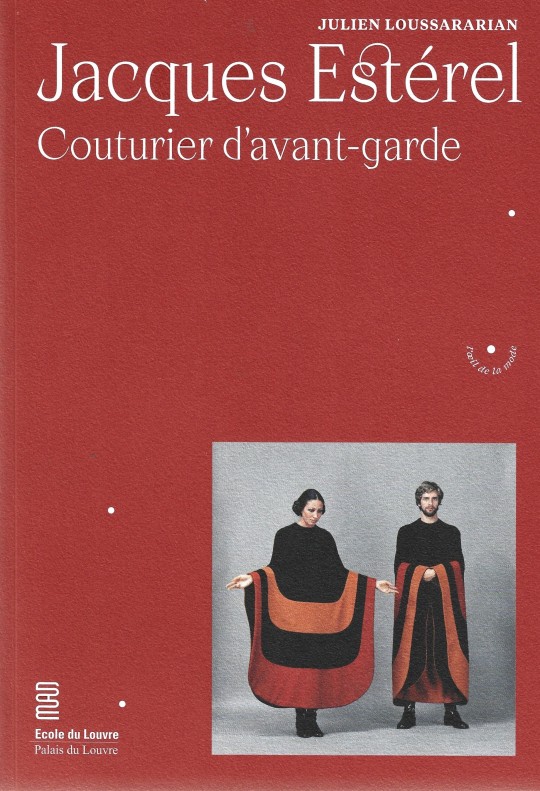
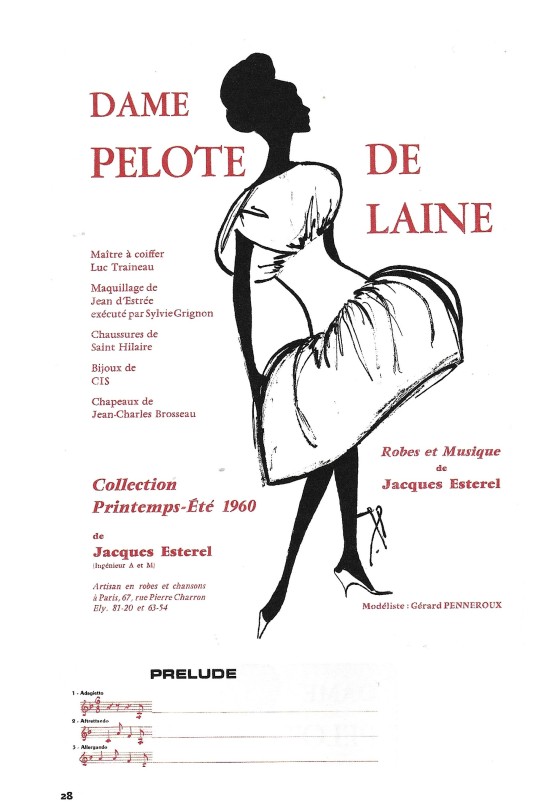


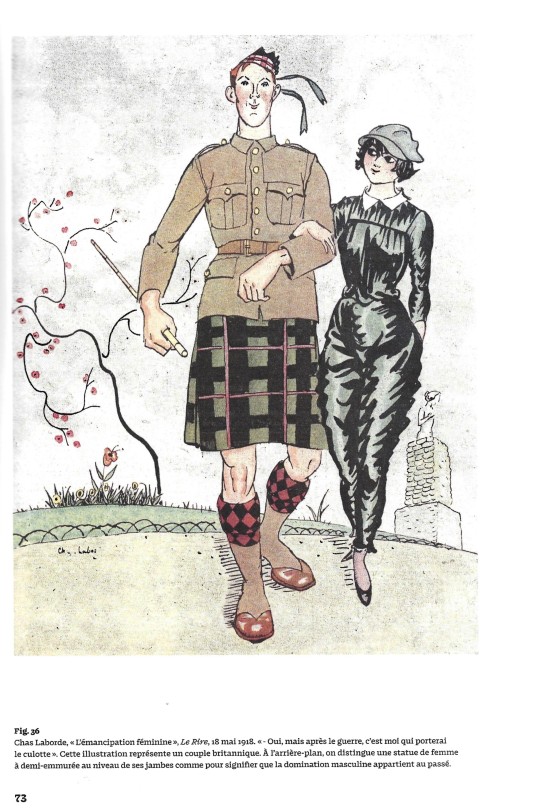
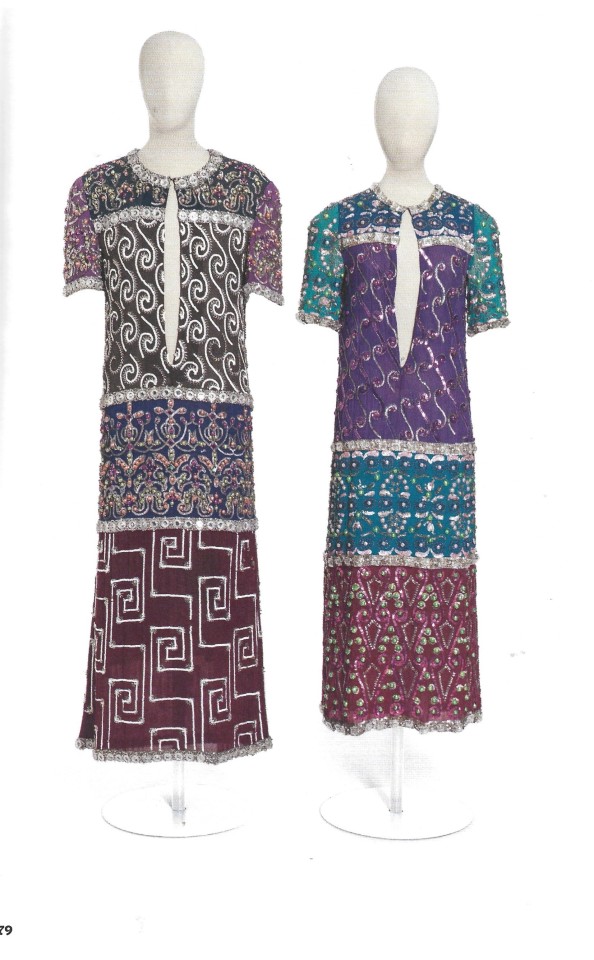

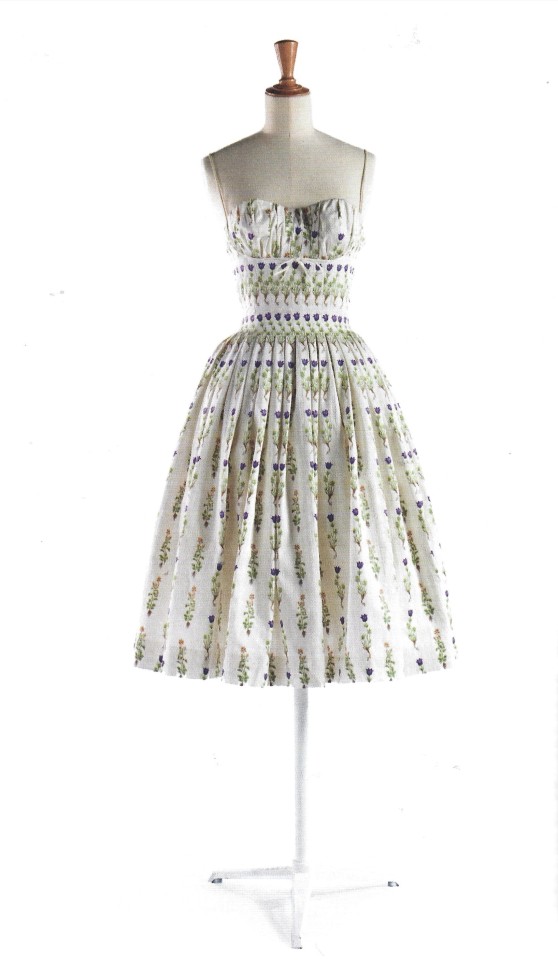

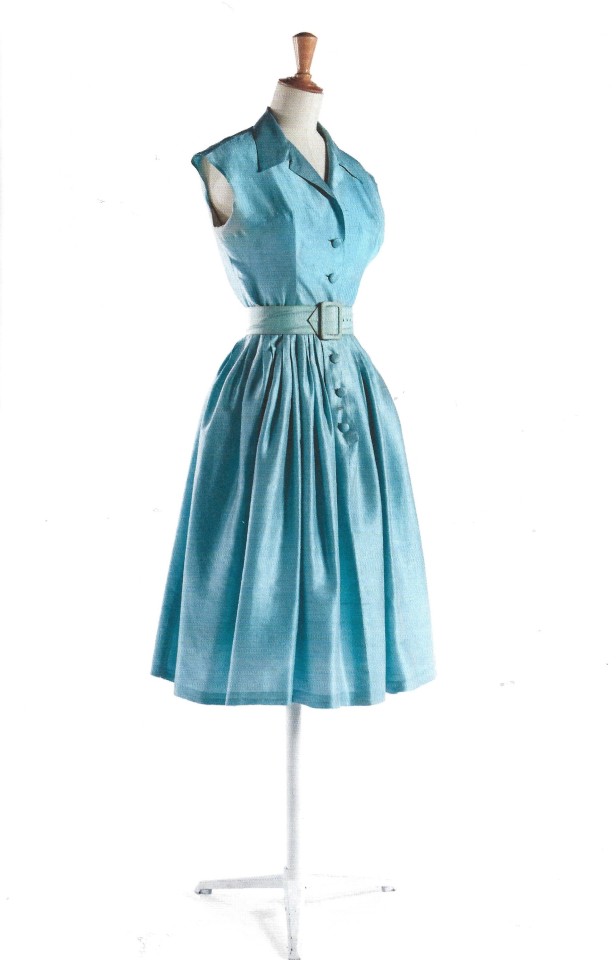
Jacques Estérel Couturier d'avant-garde
Julien Loussarian
Les Arts Decoratifs, Paris 2023, 192 pages, 17,2x24,5cm, ISBN 9782383140191
euro 45,00
Troisième numéro de la collection "L'Oil de la mode" éditée par la musée des Arts décoratifs en partenariat avec l'école du Louvre, ce livre propose de découvrir l'univers du couturier Jacques Estérel.
Aujourd’hui injustement tombé dans l’oubli, le parcours fascinant de Jacques Estérel, couturier né en 1917, a pourtant marqué les années 1950 à 1970. Cet ingénieur, auteur-compositeur et interprète à succès se lance dans la mode en 1953 en proposant des lignes qui séduisent rapidement la jeunesse de l’époque. Six ans plus tard, alors qu’il habille déjà des personnalités en vogue, il conçoit l’iconoclaste robe de mariée de Brigitte Bardot. Questionnant la représentation des genres, il introduit la jupe dans le vestiaire masculin dès la fin des années 1960, puis crée ses premières collections unisexes. Son approche singulière l’amène à reconsidérer la fonctionnalité du vêtement, imaginant notamment des tenues transformables, ou encore à personnaliser la consommation vestimentaire en diffusant ses pièces par l’intermédiaire de patrons. Cette étude approfondie dévoile l’univers d’un couturier polymorphe, dont le style a accompagné les évolutions sociétales de son temps.
24/11/23
#Jacques Estérel#fashion exhibition catalogue#Musée Art Décoratifs Paris 2023#L'oeil de la mode#couturier#fashion books#fashionbooksmilano
11 notes
·
View notes
Text

Celia Kritharioti |Fall Winter 2023-24 Haute Couture
#celia kritharioti#fashion#fall 2023#runway#editorial#couture#signal boost#blaze🔥#paris fashion week#fashion show#pfw 2023#fall 2023 couture#haute couture#Musée des Arts Décoratifs
23 notes
·
View notes
Text


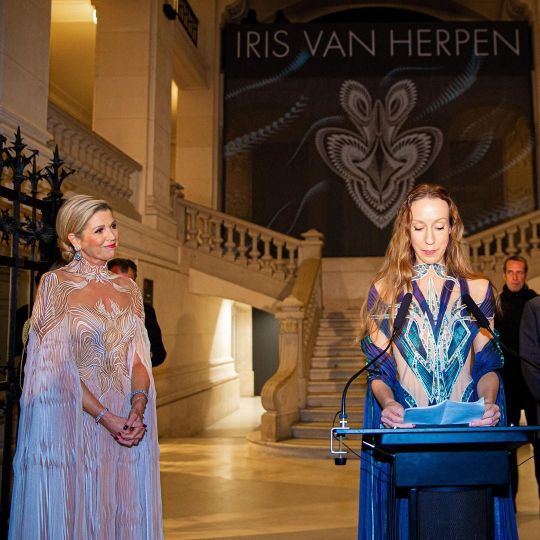
Queen Máxima opens the exhibition 'Iris van Herpen: Sculpting the Senses' at the Musée des Arts Décoratifs in Paris, a tribute to Van Herpen's progressive designs. During the tour she speaks to the curators and stakeholders. November 28, 2023.
📷 Royal House of the Netherlands
103 notes
·
View notes
Text

"Yomotsuökami" sculpture d'Heishiro Ishino (2023) et robe "Futurama" d'Iris van Herpen en polyamide recyclé (2022) à l'exposition “Iris van Herpen. Sculpting the Senses” au Musée des Arts Décoratifs (MAD), Paris, février 2024.
28 notes
·
View notes
Text
Schiaparelli’s ‘Inferno’: A journey to Hell and back
I’ve always wondered if today’s self-absorbed creative directors and edgy designers at the leading luxury fashion houses based in Paris are familiar with George Santayana’s cutting observation that, “Fashion is something barbarous, for it produces innovation without reason and imitation without benefit.” On the evidence of this year’s Paris Fashion Week I think not.
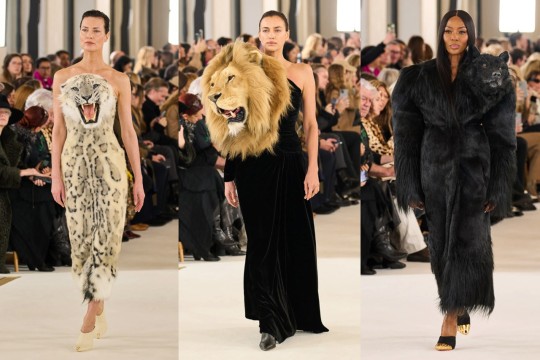
For the Spring 2023 collection at Paris Fashion Week, Schiaparelli creative director Daniel Roseberry revealed in pre-show notes that he was specifically drawn to Dante Alighieri’s magisterial Divine Comedy. He was especially inspired by Inferno, the 14th-century Italian poet’s renderings of Hell. Present as spectators and models were some of the internet’s favourite muses, such as Kylie Jenner wearing taxi-dermied outfits with hyperrealistic faux animal heads affixed to a fitted gown.

The singer Doja Cat was also there, appearing bald and covered in red gemstones at the steps of the Petit Palais like a demonic red figure. In other pieces, gold-painted torsos and metallic sculptural heads paid tribute to the house’s founder, Elsa Schiaparelli, and her ties to Surrealist artists like Man Ray, Salvador Dalí, and Meret Oppenheim during the 1930s. She was the subject of a recent retrospective at the the Musée des Arts Décoratifs in Paris last year in 2022, and her collaborations with those artists demonstrated a propensity to shock audiences with strange garments that at times merged human bodies with animal features.
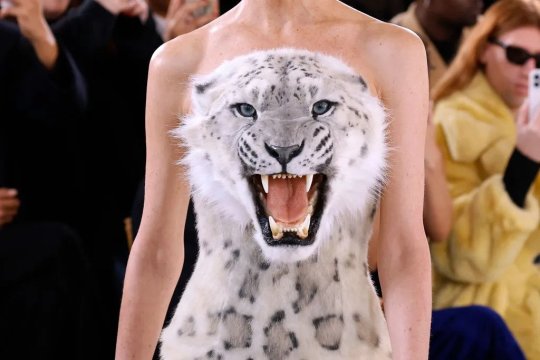

Throughout the haute couture show, Roseberry brought to life versions of Dante’s epic poem’s three allegorical animals: the lion, the leopard, and the she-wolf. Accordingly he dressed three super models, Shalom Harlow as the leopard, Naomi Campbell as the she-wolf, and Irina Shayk as the lion. All three haute couture dresses were sculpted and embroidered by hand, “celebrating the beauty of nature and guarding the woman who wears it” said the proud creative director.
When I read that particular remark I almost choked on my tea. I was sitting in a nearby Parisian café with my younger sister, who was visiting me in France, and one of our French-Nordic cousins who actually works in the luxury brand corporate world as a senior exec in LVMH. Through our cousin we had managed to see one or two of the fashion shows last week. It’s not really my cup of tea, but I gave in to indulge my visiting sister and my cousin who loves her job.
Many people outside of haute couture world of Paris Fashion Week, focused on the spectacle of cruelty of seeing three stuffed animal heads on the bosoms of three super models strutting on a fashion show runway. Most of the criticism was misplaced as it showed little understanding what a haute couture show is all about. It allows the talented designer to let his/her hair down and show off their most off the wall ideas, and above it’s meant to be playful.
That said, I, however, was focused on what Daniel Roseberry actually said of his collection. I thought it was a misquote but no, as it turned out later, it’s what the designer said.
I resisted the urge to feel ‘offended’ and to look around for a pitch fork to join the unruly easily offended mob to denounce the designer. To me it wasn’t about the Surrealist heritage of Schiaparelli that the creative director drew inspiration from for one part of his show - that’s what one might expect from that fashion house. Nor was it the animal depiction on dress gowns that was pretty par for course for any haute couture fashion show - which I personally found garish and in bad taste - but which drew the public outcry against the perception of animal cruelty.
No, it was the crime of cultural vandalism against Dante himself.

I have no idea if Roseberry has actually read the Dante’s Divine Comedy or not but from his remarks that his hideous creations were “celebrating the beauty of nature and guarding the woman who wears it” he clearly hadn’t or was high as a kite on drugs and high energy drinks.
So I’m going to discuss Dante’s three wild beasts as Dante wrote them.
In the opening Canto of the Divine Comedy, Dante encounters three ferocious animals: the leopard, the lion and the she-wolf.

In the first canto of the Inferno, Dante, having gone astray in a dark wood, reaches the base of a sunlit hill (later described by Virgil as “the mountain of delight, the origin and cause of every joy”) and begins to climb - only to find the way blocked by three beasts. First, a leopard appears.
And almost where the hillside starts to rise -
look there! - a leopard, very quick and lithe,
a leopard covered with a spotted hide.
He did not disappear from sight, but stayed;
indeed, he so impeded my ascent
that I had often to turn back again.
It is a spring morning, and “the hour and the gentle season” give Dante “good cause for hopefulness” upon seeing the leopard - but then he sees a lion.
but hope was hardly able to prevent
the fear I felt when I beheld a lion.
His head held high and ravenous with hunger -
even the air around him seemed to shudder -
this lion seemed to make his way against me.
When the third beast appears, Dante gives up hope entirely.
And then a she-wolf showed herself; she seemed
to carry every craving in her leanness;
she had already brought despair to many.
The very sight of her so weighted me
with fearfulness that I abandoned hope
of ever climbing up that mountain slope.
. . . I retreated down to lower ground.
When you read Dante - in Italian or in translation - nothing you read ever so simple and nothing should be taken at face value. Indeed in the Divine Comedy almost nothing is said without good reason. Take the verse preceding the appearance of the three beasts.
When I had rested my body there a while
I then started again up the barren slope
the more powerful foot always behind the other
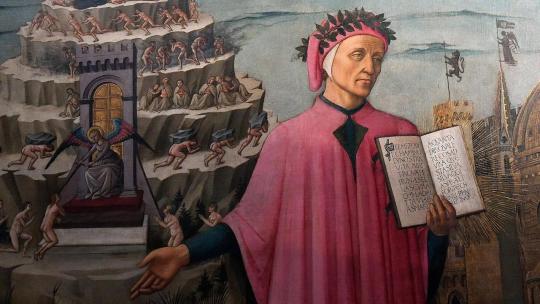
Dante refers to the manner of his climb. He makes the climb with ‘the more powerful foot always behind the other’. One foot (the more powerful) is always behind (lower than) the other. This is a difficult line to interpret. It could of course simply be a description of how someone climbs a hill. You plant one foot in the ground and then push up allowing the other foot to 'land' and secure your position.
If Dante is talking about a stronger (firmer) foot and (presumably then) a weaker foot and talks about the one being lower than the other, there is probably a deeper meaning behind it. In Dante's thought world it was sometimes said that in the 'pilgrimage' towards heaven, we walk on two 'feet' (or legs); the Will and the Intellect. Because the Will, the stronger of the two, is always desiring what it shouldn't, our journey forward towards God is therefore hampered. We limp our way to heaven! So Dante could be saying that his Will lags behind his Intellect as he strives to find the light of God, making his journey up those slopes that much harder. The (weaker) Intellect is having to drag the (stronger) Will upwards towards the divine light.
An alternative explanation is inspired by a comment from St Augustine to the effect that 'love is the foot of the soul', in other words the driving force of the soul's quest for God. So, Dante could be suggesting that his stronger foot (love) pushes his body up the hill towards God. Personally I prefer this more optimistic image of his ascent; after all, he begins his climb in hope and anticipation.
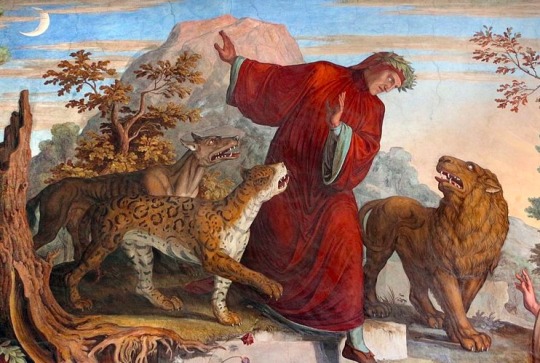
And so we have to ask ourselves as we come to the three beasts, is there a deeper meaning to these animals beyond their physical power and scariness. Yes, there is.
When Dante engages with myths throughout his Inferno, he’s also leaning into this tradition of animals as allegories. He’s striving to teach a lesson, as mythical creatures punish sinful souls for eternity. Invoking creatures from antiquity, Dante’s Inferno moulds pagan hell into a Christian design. These mythical creatures are behemoth reminders for potential sinners about the consequences of their actions.
Even from the opening canto of Dante’s Inferno, we find our titular character lost in a dark and winding wood. As the woods darken, he feels his consciousness enter a strange state - a feeling that he likens to death (Inferno 1.7). As this shroud covers him, Dante encounters the first mythical creatures in the Divine Comedy.
Leopards and lions were not native to Italy. Travellers relayed tales of these beasts to illuminators and scribes, and information about them would be published in bestiaries. Leopards were often incorporated into coats of arms when there were descendants of adultery in a lineage. The leopard Dante encounters is “very quick and lithe” (Inferno, 1.32). Perhaps the leopard is meant to symbolise a sin associated with impatience or hubris. Lions were often symbols of Christ, akin to Aslan in the Chronicles of Narnia but in this case the lion was “ravenous with hunger” (Inferno 1.46), which may have been a reminder to the reader about the dangers of gluttony.
The importance of animals goes beyond face value. Animals appearing in stories always contain allegories. The beasts symbolised the major categories of sin: incontinence, violence and fraud. Or as they are more commonly called - lust, pride and avarice. In her commentary, Dorothy L. Sayers explains that these categories of sin were associated with the three stages of life - lust with youth, pride (self-conceit) with the middle years and avarice with old age. Of course, they can attack a person at any time of his life.
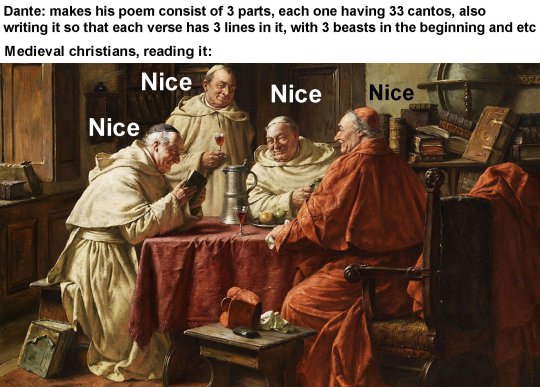
Symbolism can help us enormously when reading Dante but it is also important I think to try to read the text itself and take clues from the way Dante uses the symbols. The Leopard is mesmerising, clever, quick and very pleased with itself, displaying its gaudy spots for all the world to see. The Lion terrifies even the air around it with its appearance (and presumably its roar) but the most noticeable thing about it from Dante the pilgrim's point of view is how proud it is as it hold its head up high. The third beast, the she-wolf, is one that has brought grief to many people. Her leanness speaks of an insatiable appetite; no matter how much (or how many people!) she eats she never thrives, never grows fat, she is never satisfied.
If Dante's world each of the beasts represented different vices or sins - the leopard as a symbol of lust, the lion a symbol of violent pride and the she-wolf as a symbol of avarice and fraud - then these could also either represent Dante's own besetting sins which prevent him from reaching heaven, or perhaps the three levels of hell which are divided according to the kind of sin committed. In the first circle Dante the pilgrim will find those guilty of avarice and incontinence (not the bowel kind), in the second circle sinners guilty of violence and in the third, those responsible for crimes of treachery and fraud.
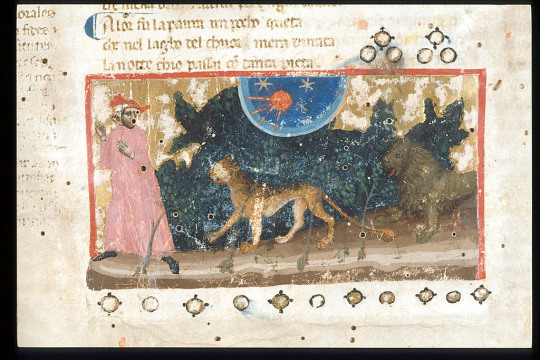
It’s easy to see then these animals as symbols of divine judgement on Dante. Dante is not ready to find the divine light. He is still under judgement. His sins have not been dealt with and as we shall learn, only by descending to hell and rising through the mountain of purgatory will he be able to find that light as a 'saved' soul.
All three wild beasts are mentioned in the bible and used as symbols of the kind of fate that will befall the people of God as divine judgment.
In Hosea 13:4-8 God says that he will be like a lion and a leopard (and an angry mother bear!) towards his ungrateful, apostate people.
In Jeremiah 5.1-6, Jeremiah fails to find one godly (just) person in the city of Jerusalem. Failing to do so God promises that judgement will come like this:
Therefore a lion from the forest will attack them,
a wolf from the desert will ravage them,
a leopard will lie in wait near their towns
to tear to pieces any who venture out,
for their rebellion is great
and their backslidings many. (NIV)
If indeed the wild beasts represent the judgement of God in the Old Testament through Hosea and Jeremiah, in the New Testament they take another form entirely. And this may well have played a part in Dante’s thought. It is entirely possible that Dante is thinking of the Apostle Paul's reference to 'fighting wild beasts in Ephesus' (1 Corinthians 15.32). Of course Paul didn't mean he actually wrestled lions and wild beasts. He meant that dealing with those who opposed him there was just like being a gladiator in the arena fighting lions and bears. And the people who opposed him were the institutions of Ephesus, the city authorities, the trade guilds, the business leaders.

Dante the pilgrim, following in the footsteps of the Apostle struggles with his own 'wild beasts'. the wild beasts who had plotted against him, and exiled him from his native city in 1302. Dante the pilgrim walks in the footsteps of Paul. He also walks in the footsteps of Christ who was alone in the wilderness with the wild beasts for 40 days and 40 nights. Although the the original intention of the gospel writers may have been to conjure up the impression of a restored Eden, for Dante those accounts would have conjured up the idea of conflict and danger.
Like Paul and like Christ, Dante the pilgrim has to struggle with ferocious animals in his journey towards God, just as Dante the writer has had to in his journey.
Who or what then are these forces, these wild animals who prevented Dante from finding the true path? Interestingly these animals were all prized in one way or another in Dante's native Florence.
There is evidence that a leopard and a number of lions were kept and publicly displayed in cages in Florence in Dante's day near what is today the Loggia del Bigallo, as a sign of Florence's power and prestige.

The lion was also part of Florence's coat of arms. Scholars have noted that Dante was familiar with the writings of Richard of St Victor who had associated the leopard with the sins of deceit and fraud. The lion was associated in medieval bestiaries with the sin of avarice (because of its apparently insatiable hunger) as well as with pride. These are 'civic sins' as much as personal vices.
Was it Florence's avarice and pride that was in the front of Dante the writer's mind when he described the leopard's gaudy spots and the lion with its head held high? Is it perhaps the city that had turned against Dante and thrown him out to live a life of exile that prevents the progress of the pilgrim towards paradise?
The she-wolf is the most daunting beast of all. She proceeds terrifyingly, step by step stalking forward, threatening and relentless. Dante comments:
The very sight of her so weighted me
with fearfulness that I abandoned hope
of ever climbing up that mountain slope.
. . . I retreated down to lower ground.
Surprisingly perhaps it is the she-wolf, not the leopard or the lion that finally causes the pilgrim to despair. Wolves were considered to be symbols of fraud and deceit as well as sexual immorality and prostitution.

In his hugely influential work The City of God, St Augustine had commented that in his time prostitutes were known as she-wolves and a brothel was known as a 'wolf den'. He suggested that this verbal link gave rise to the famous origin myth of Rome, according to which the two twins Romulus and Remus, the offspring of the god Mars and the their mother (whom he had raped) Rhea, were abandoned to die but were saved and suckled by a she-wolf. Augustine suggests that instead, they were found and fed by an unknown prostitute i.e. by a 'she-wolf'. From this play on words came the legend that it was a literal she wold who found and fed them. In the City of God (Book 18 chapter 21) Augustine writes as follows:
“Procas ruled before Aemulius. Now Aemulius had made his brother Numitor's daughter, named Rhea, a Vestal Virgin; she was also called Ilia, and was the mother of Romulus. The Romans wish to say that she conceived twins by Mars; for, in this way, they honoured, or excused, her unchastity. They offer as proof of this the legend that, after their exposure, the infants were suckled by a she-wolf. For they hold that this species of animal belongs to Mars; and so, therefore, the she-wolf is believed to have offered her teats to the little children because she recognised in them the sons of Mars, her master.
There is, however, no lack of people who say that, when the exposed infants lay wailing, they were first taken in by some unknown whore, and that hers were the first breasts they sucked - for ‘she wolves’ (lupae) was the name given to whores, which is why houses of ill repute are even now called ‘wolfouses’ (ilupanaria). Afterwards, it is said, they came into the care of a shepherd called Faustulus, and were nurtured by his wife Acca. And yet if, in order to convict the man who was king, and who had cruelly commanded that these infants be cast into the water, God willed to help the children through whom such a great city was to be founded, and to have them rescued from the water by His divine intervention and suckled by a wild animal: is there anything very wonderful in this? “
- Translated by W. Dyson (Cambridge Texts in the History of Political Thought)
So, according to Augustine, it wouldn't be surprising if God had supplied a real she-wolf to find and feed the abandoned babies, because God is merciful and just, but in fact the stories he has heard suggest a different explanation. Namely that it was a human 'she-wolf', a whore, who had found them.
It is also interesting that Augustine links the god Mars with the story. The wolf, he says, is one of Mars' own creatures' i.e. a beast with a special affinity to Mars. Is it relevant that the city of Florence had adopted Mars as its own patron 'star'? It may also be relevant that the name of the Guelf faction, some of whom had ordered Dante's expulsion from Florence, was linked to the German word for wolf (Welf). Dante's enemies in Florence were 'wolves'. It seems the clue lay in the name.
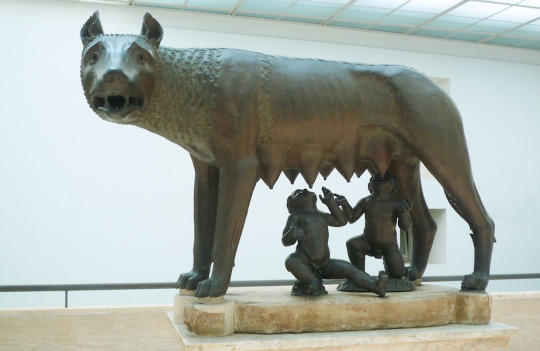
But it may not have been only Florence Dante wanted to suggest to readers' minds. In addition it seems that by the time Dante wrote the Divine Comedy the Papal Curia had adopted as its own symbol the famous statue of Romulus and Remus suckling from the mother she-wolf on the Capitoline Hill. The she-wolf was of course the defining myth of Rome’s founding. Several ancient sources refer to statues depicting the wolf suckling the twins. Livy reports in his Roman history that a statue was erected at the foot of the Palatine Hill in 295 BC. Pliny the Elder mentions the presence in the Roman Forum of a statue of a she-wolf that was "a miracle proclaimed in bronze nearby, as though she had crossed the Comitium while Attus Navius was taking the omens". Cicero also mentions a statue of the she-wolf as one of a number of sacred objects on the Capitoline that had been inauspiciously struck by lightning in 65 BC: "it was a gilt statue on the Capitol of baby being given suck from the udders of a wolf." Cicero also mentions the wolf in De Divinatione 1.20 and 2.47.
The Capitoline Wolf was widely assumed to be the very sculpture described by Cicero, due to the presence of damage to the sculpture's paw, which was believed to correspond to the lightning strike of 65 BC. The 18th-century German art historian Johann Joachim Winckelmann attributed the statue to an Etruscan maker in the fifth century BC, based on how the wolf's fur was depicted. It was first attributed to the Veiian artist Vulca, who decorated the Temple of Jupiter Capitolinus, and then reattributed to an unknown Etruscan artist of around 480 - 470 BC.
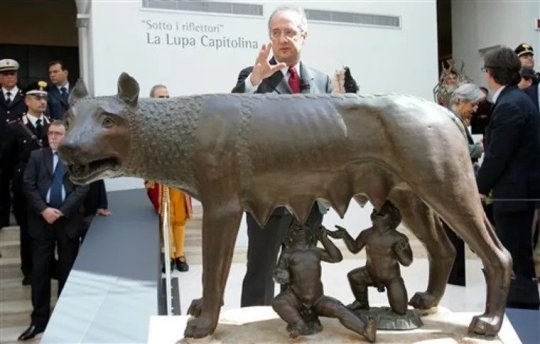
So for centuries The Capitoline Wolf was almost universally recognised as an Etruscan statue from the early part of the 5th century BC. It was only in 2006 that an Italian art historian and restorer, Anna Maria Carruba, published a detailed critique against the accepted view. She argued that the bronze had been cast with a method unknown in classical times, and that marks left by the artist on its surface were more typical of the Middle Ages. Barely a year later in 2007, Rome’s top archaeologist and heritage advisor, Prof. Adriano La Regina, reported that over 20 tests using radiocarbon and thermoluminescence dating don at the University of Salerno suggested that the wolf portion of the statue may have been cast between 1021 and 1153. Overnight one ancient Rome’s oldest artefacts became one of city’s youngest.
Given the pride and place of this famous statue, The Capitoline Wolf, given by the Church of Dante’s time, it adds an extra dimension to any reading Dante’s words about the she-wolf. For the wolf, the creature of Mars, the symbol of Rome and now of the church was a big thing in 13th century Italy. It is this beast that scares Dante the most, that strips away his hope and forces him to turn around. It is this beast he says which has been ‘the despair of many’. It is not a surprise then to find that throughout the Inferno he likens various damned souls to wolves.
Again the bible may have played a part in his thinking Jesus warned his disciples to watch out for the false prophets, the wolves who come dressed in sheep's clothing. Ithink it’s too much of a stretch to say it was a direct attack on the church or the papacy of Boniface VIII but it does lend credence to the possibilities of personal corruption for those in the church who flirted with earthly temptations and sins - the very sins that destroyed souls and blocked humanity’s upward path to heavenly salvation.

For Dante there was no distinction between the inner and the outer person or between the individual and social. The individual did not live a life apart from his or her wider life in the state and in the church. Sin was something that affected everything and everyone. These beasts may well represent sin or vices with which Dante the writer was only too familiar in his own experience but to me it seems highly likely that they represent above all the forces he saw around him which, in his mínd, prevented people finding the beauty and love of God. The Apostle fought his wild beasts in Ephesus. Dante fought his in Florence.
The mythical figures featured in Dante’s Inferno lean on a long tradition of animals as allegory. As Dante journeys through the realms of the afterlife, these beings can lend a helping hand on the long and winding road through hell, purgatory, and heaven. While the creatures of the Inferno intend to scare sinners straight, they themselves also suffer as the embodiment of their respective sins.
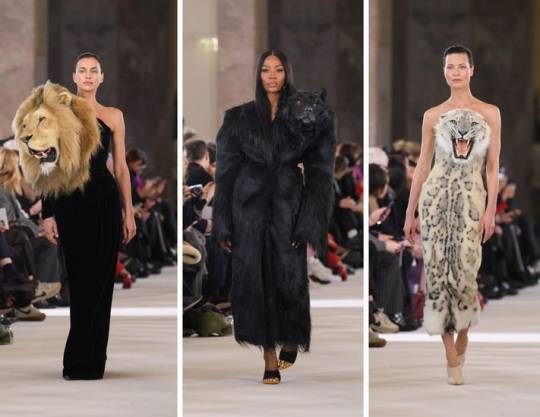
While hell is where sinners languish, it remains a complex and captivating place. Dante filled his entire Divine Comedy with bizarre creatures from across literature, and they serve a similar purpose to any beast in a story: to distill morals or a lesson. Their presence makes the story memorable, even for modern readers like us today.
Dante’s Inferno brings readers on a journey through hell, replete with allegories from across time like sitting through a hellscape of a Schiaparelli haute couture fashion show during Paris Fashion Week. As time wears on, Inferno’s wild beasts offer captivating perspectives on our very modern sins of lust for affirmation, pride in our self-centredness, and an avarice for material comfort.

But I don’t wish to end on a downer because Dante is not a pessimistic poet. Most readers never proceed beyond the macabre thrills of Dante’s ‘Inferno’, with its grotesquely inventive torments. Those who do ascend from the “Inferno” find some of Dante’s most lyrical verse in his ‘Purgatorio’. But it is the least-read of the three books, ‘Paradiso’, that makes sense of the other two. It shows, Dante was not just a poet of crisis, but also a poet of hope:
The ‘Divine Comedy’ is that rarest thing, an epic poem with a hopeful ending. It is about getting a second chance - and ultimately finding joy, a Christian understanding of joy in the light of God’s saving grace.
#essay#dante#dante alighieri#divine comedy#commedia#italian#poem#epic#literature#christian#christianity#church#bible#history#schiaparelli#paris fashion week#paris#paris fashion week 2023#shalom harlow#naomi campbell#irina shayk#supermodels#daniel roseberry#sin#fashio#clothes#haute couture#lion#leopard#she wolf
87 notes
·
View notes
Photo
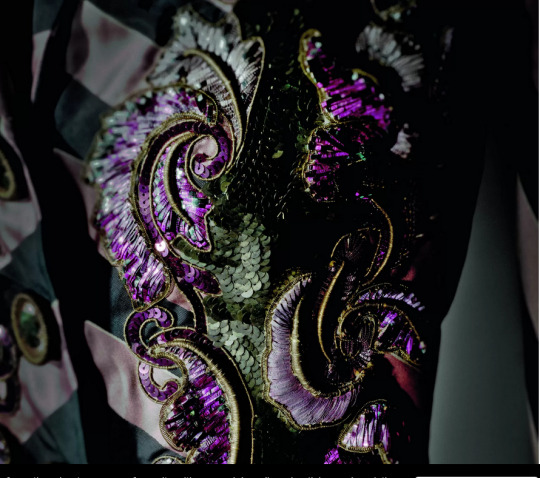
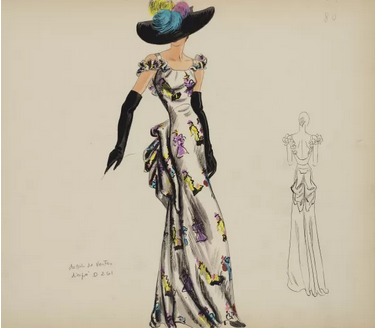
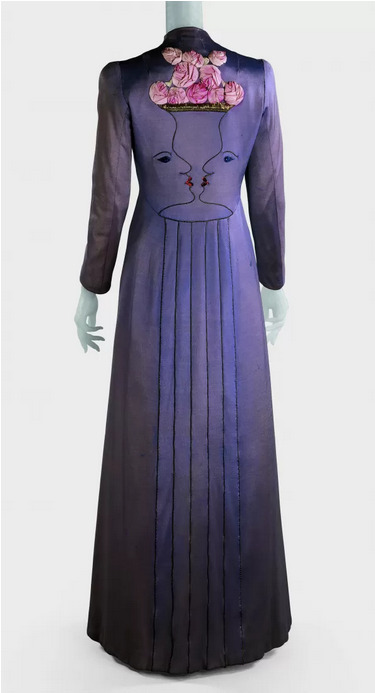
"Shocking ! Les Mondes Surréalistes d’Elsa Schiaparelli”
The Musée des Arts Décoratifs in Paris has a show running through January 2023 looking at Schiaparelli and surrealist art which surrounded and sometimes inspired her. Of course, she also made less novel designs, but these are what she is best known for. Even if you find the trompe l’oiel, or fool-the-eye efforts a little silly in a garment, you can surely appreciate the fine work of the couture workers who created them.
This show bring together more than 500 works with over 200 looks, garments, and accessories by Schiaparelli and the rest of the objects include paintings, sculptures, jewelry, ceramics, and photographs by by contemporaries like Man Ray, Salvador Dalí, and Jean Cocteau.
You will need tickets to attend the show. For more info, go here: https://madparis.fr/Shocking-Les-mondes-surrealistes-d-Elsa-Schiaparelli
#elsa schiaparelli#shocking#shocking les mondes surrealistes d'elsa schiaparelli#musee des arts decoratifs#1920s fashion#1930s fashions#costume exhibition#fashion exhibition#dress exhibition#costume history#dress history#fashion history#costume history museum#dress history museum#fashion history museum#fashion#surrealism#man ray#jean cocteau#salvador dali
66 notes
·
View notes
Photo
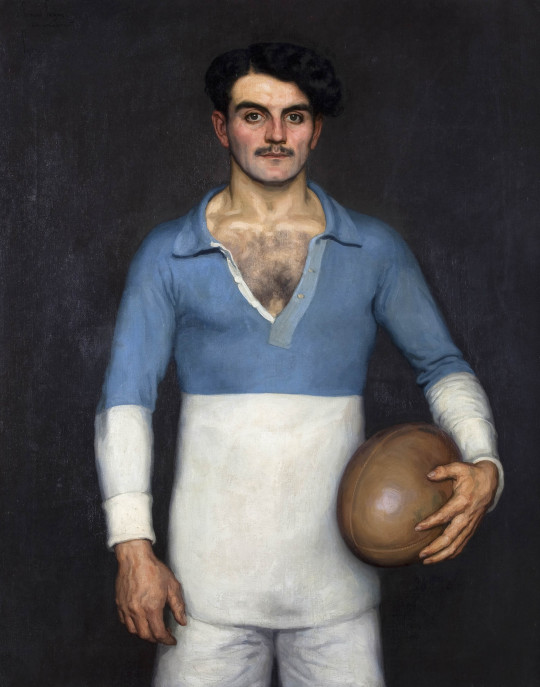
fashion | DES CHEVEUX ET DES POILS at MAD Paris
Following the success of the exhibitions La mécanique des dessous (2013), Tenue correcte exigée ! (2017) and Marche et démarche (2019), the Musée des Arts Décoratifs continues its exploration of the relationship between the body and fashion with an exhibition on hair styles and body hair grooming. Des cheveux et des poils (Hair & Hairs) exhibition, which runs from April 5 to September 17, 2023, demonstrates how hairstyles and the grooming of human hair have contributed to the construction of appearances for centuries. Hair is an essential aspect of one’s identity and has often been used as a means of expressing our adherence to a fashion, a conviction, or a protest while invoking much deeper meanings such as femininity, virility, and negligence, to name just a few.
The exhibition explores through 600 works, from the 15th century to nowadays, the themes inherent in the history of hairstyles, but also the questions related to facial and bodily hair. The trades and skills of yesterday and today are highlighted with their iconic figures: Léonard Autier (favorite hairdresser of Marie- Antoinette), Monsieur Antoine, the Carita sisters, Alexandre de Paris, and more recently studio hairdressers. Great names in contemporary fashion such as Alexander McQueen, Martin Margiela, or Josephus Thimister are present with their spectacular creations made from this unique material that is hair.
The exhibition is presented in the Christine & Stephen A. Schwarzman’s fashion galleries of the Musée des Arts Décoratifs. The scenography will be created by David Lebreton of the Designers Unit agency.
In an atmosphere where shades of blond, brown and red evoke the main hair colors, the course, divided into five themes, questions what makes hair, in Greek- Roman and Judeo-Christian cultures, an attribute of the animal and wildness and explains why hair had to be constantly tamed to remove the woman or man from the beast.
FASHION AND EXTRAVAGANCE
The first part of the exhibition opens with the study of the evolution of feminine hairstyles, a real social indicator and marker of identity. In the Middle Ages, obeying the command of Saint Paul, the wearing of the veil imposes itself on women until the 15th century. Gradually, they abandon it in favor of extravagant hairstyles that are constantly renewed. In the 17th century, the hairstyle “to the Hurluberlu” (dear to Madame de Sévigné) and “to the Fontange” (after the name of Louis XIV’s mistress) are emblematic of real fashion phenomena.
Around 1770, the high hairstyles known as Poufs are undoubtedly the most extraordinary of Western hair modes. Finally, in the 19th century, women’s hairstyles − whether inspired by ancient Greece, or known as “the giraffe,” in curls or “the Pompadour” − are just as convoluted.
TO BEARD OR NOT TO BEARD
After the hairless faces of the Middle Ages, a turning point occurred around 1520 with the appearance of the beard, symbol of courage and strength. In the early 16th century, the three great Western monarchs: Francis I, Henry VIII, and Charles V were young and wore beards, which were then associated with the virile and warrior spirit. From the 1630s until the end of the 18th century, the hairless face and the wig were the hallmarks of courtiers. Facial hair did not reappear until the early 19th century with the mustache, sideburns, and beard: this century was by far the hairiest in the history of men’s fashion. A multitude of small objects used (mustache wax, brushes, curling irons, wax, etc.) testify to this enthusiasm for mustaches and beards.
During the 20th century, the rhythm of bearded, mustached, and smooth faces continued, until the return of the beard among Hipsters in the late 1990s. The maintenance of hairiness among these young urbanites has given rise to the profession of barber, which had disappeared since the 1950s. Today, the thick beards tend to give way to the mustache that had deserted faces since the 1970s.
The choice of keeping, eliminating, hiding, or displaying hair on other parts of the body is also a subject of history that the exhibition addresses through the representation of nude bodies in visual arts and written testimonials. Hairiness is rare, or even absent from ancient painting. The hairless body is synonymous with the antique and idealized body, while the hairy body is associated with virility, or even triviality. Only enthusiasts of virile sports such as boxing and rugby, as well as erotic illustrations or medical engravings, show individuals covered in hair.
Around 1910-1920, when women’s bodies were exposed, advertisements in magazines touted the benefits of hair removal creams and more efficient razors to eliminate them.
In 1972, actor Burt Reynolds posed naked, hairy body for Cosmopolitan magazine, but fifty years later, an abundance of hair is no longer in fashion. Since 2001, sportsmen being photographed naked for calendars like Les dieux du stade (The Gods of the Stadium) have had rigorously controlled hairiness.
BETWEEN TRUE AND FALSE
Hair styling is an intimate act. Moreover, a well-born lady could not show herself in public with her hair down. A painting by Franz-Xaver Winterhalter, dated 1864, depicting Empress Sissi in a robe and with her hair untied, was strictly reserved for Franz Joseph’s private cabinet. Louis XIV, who became bald at a very young age, adopted the so-called “bright hair” wig, which he then imposed on the court.
In the 20th century, Andy Warhol had the same misfortune: the wig he wore to hide his baldness became an icon of the artist. Nowadays, hairpieces and wigs are used in high fashion, during fashion shows or, of course, to compensate for hair loss.
The natural hair colors and their symbolism are studied along with what they convey. Blonde is said to be the color of women and childhood. Red hair is attributed to sultry women, witches and some famous stage women. As for black hair, it would betray the temperament of brown and brunettes. From the experimental colorations of the 19th century to the more certain dyes from the 1920s: artificial colors are not forgotten. The work of the hairdresser Alexis Ferrer who makes digital prints on real hair is also presented.
TRADES AND SKILLS
The exhibition reveals the different hair professions: barbers, barber-surgeons, hair stylists, wigmakers, ladies’ hairdressers, etc., through archival documents and a host of small objects: signs, tools, various products, and the astonishing perming machines and dryers of the 1920s.
In 1945, the creation of haute coiffure elevated the profession to the rank of an artistic discipline and a French savoir-faire. 20th century hairdressing is marked by Guillaume, Antoine, Rosy and Maria Carita, Alexandre de Paris styling princesses and celebrities. Nowadays, great hairstyling is mainly expressed during the fashion shows of prestigious fashion houses. Sam McKnight, Nicolas Jurnjack and Charlie Le Mindu were invited to the exhibition to create extraordinary hairstyles for top models and show business personalities.
A HAIRY CENTURY
Finally, a special focus will allow us to evoke the iconic hairstyles of the 20th and 21st centuries: the 1900 chignon, the 1920s garçonne haircut, the 1930s permed and notched hair, the 1960s pixie and sauerkraut, the 1970s long hair, the 1980s voluminous hairstyles, the 1990s gradations and blond streaks, not to mention afro-textured hair.
The arrangement of hair in a particular form can reveal the belonging to a group and manifest a political and cultural expression in opposition to society and the established order. More ideological than aesthetic, the Iroquois crest of the punks, the neglected hair of the grunges or the shaved heads of the skinheads are strong moments of hair creativities.
Wearing the hair of another, known or unknown, has an eerie dimension, and this superstition seems well-entrenched. Despite these apprehensions, some creators choose to transcend this familiar material into fashion objects. This is the case of contemporary designers such as Martin Margiela, Josephus Thimister and Jeanne Vicerial. The question of identity, treated lightly or more deeply, is often at the heart of the reasoning, whether the hair is real or fake.
The Musée des Arts Décoratifs has benefited from exceptional loans from the Château de Versailles, the Musée des Beaux-Arts d’Orléans, the Musée du Louvre and the Musée d’Orsay.
till 17 sept. 2023
madparis.fr
Andrei S.
2 notes
·
View notes
Text
Dior museum in Paris through the eyes of
@cismateo_!
Seguir 5 d
Paris
From October 13, 2022, to April 16, 2023, the Musée des Arts Décoratifs offers us to dive into the 80's with a new exhibition running in the nave.
Have you been to Dior's museum?
@cismateo_via Tiktok
DM us "Hotel" or click our bio link for exclusive hotel deals in Paris.
#paris #parisienne #dior #parisvibes #parisfrance #parislife #paristravel
3 notes
·
View notes
Text
Emma Watson appeared in high spirits on Monday as she made her way to Paris Fashion Week's Schiaparelli Couture Fall Winter 2022/2023 show.
The 32-year-old star was snapped leaving her Ritz hotel in the French capital alongside pal Derek Blasberg.
The actress opted for a distressed look with a pair of grey wash jeans, which featured a ripped knee design.
She added a white shirt to the ensemble, with a black draped shoulder cape coat layered on top.
Donning chunky Dr. Marten Chelsea boots, the beauty accesorised with a chunky gold ring and a black handbag.
Emma's light brown locks were left down, falling alongside her jaw in a softly tousled curl.
She sported a typically natural palette of makeup with a soft pink lip, flashing onlookers a huge smile.
Emma walked alongside pal Derek as they left the Ritz, who kept his look low-key ins pastel checked shirt and beige trousers.
Arriving at the show's Musée des Arts Décoratifs location, the Harry Potter actress waved to guests at the jam-packed show.
Kicking off on Sunday, Paris Haute Couture Week is set to run until Thursday - with top couture designers such as Christian Dior, Jean Paul Gautier and Balenciaga all set to unveil their new collections.
It follows on from the menswear collection shows, which took place in the city Menswear from June 21 to June 26.
The week of high fashion is expected to welcome a host of A-list guests, with stars such as Rita Ora and Pixie Lott already appearing alongside Emma on Monday.
----
Okay... not a fan of the look. The top makes her head look big, don't like the jeans and it just looks like she's fashionably dressed for a graduation.
Anyone else wondering how the Daily Mail doesn't know the brand of anything she's wearing, except the boots?
4 notes
·
View notes
Text
Parisian Cultural Odyssey: Art, History, and Reflections
During my visit to Paris, I explored galleries and museums. While strolling along Rue Rivoli, a vibrant painting of a sunset by artist Scott Naismith captivated me. Despite depicting Scottish sunsets, his work's magical essence, highlighted by vibrant colors, transported me, making me yearn to witness the Scottish landscapes in person.
As the Paris 2024 Olympics draw near, marking a century since the city hosted the Games, international athletes are set to grace the streets again. However, our focus isn't on that; concurrently, Le Musée des Arts Décoratifs hosts an exhibition centered on fashion and sports. If you find yourself in Paris before April 2024, I highly recommend attending this captivating showcase. Not only because of the upcoming Olympics, but also because it imparts knowledge, such as the origin of the term "Gymnastics" from the Greek "Gymnospermes," meaning naked. It enlightens on the historical participation of both men and women in sports and the French origin of Tennis in the 12th-13th century, evolving from a handball game.

The exhibit also features iconic pieces, including a humorous sighting of the Juicy Couture pink sweatpants that were a trend in middle school, now immortalized in a museum. It delves into early Lacoste clothes, revealing the relationship between brands and victorious athletes, and presents controversial outfits that intrigue without giving away too much. Drop a comment if these facts are new to you, or share your discoveries after visiting.
Continuing with Le Musée des Arts Décoratifs, a temporary photography exhibition titled "LE JAPON EN COULEURS. PHOTOGRAPHIES DU XIXe SIÈCLE" is ongoing until December 31st, 2023. It showcases never-before-seen pictures of Japanese scenery and people from the 19th century, alongside a few Ukiyo-e pieces, offering a rare opportunity to witness history through visuals.
During my stay in Paris, I seized the chance to catch the Ron Mueck exhibition before its conclusion. His latest work, "Mass" (2017), and a potential work in progress were on display. The installations cleverly hinted at themes of life, death, and biblical and mythological subjects.

The Fondation Louis Vuitton hosted another memorable exhibition featuring the works of Mark Rothko. His paintings, although similar, showcased variations in color and texture. The Black-Form collection, with its monochromatic art, particularly stood out. The dimly lit room added a unique touch, allowing the differences in the black-on-black works to gradually reveal themselves.

Aside from exploring exhibitions, I secured good seats for a play titled "La Note" at the Bouffe Parisienne theater, starring Sophia Marceau and François Berléand. The profound yet humorous piece prompted introspection about life, specifically one's own. Questions about happiness, life's trajectory, and aspirations upon growing old resonated after the curtain fell. If you comprehend French, I highly recommend attending before time runs out. A special thanks to Audrey Schebat for creating this thought-provoking experience.
I relished every moment in Paris, and I eagerly look forward to returning soon for more art, culture, and enriching experiences.
#paris#art#museums#gallery#Rothko#mark rothko#painting#realism#culture#sculpture#ron mueck#sunset#photography#japan#french#theater#performing art
1 note
·
View note
Text






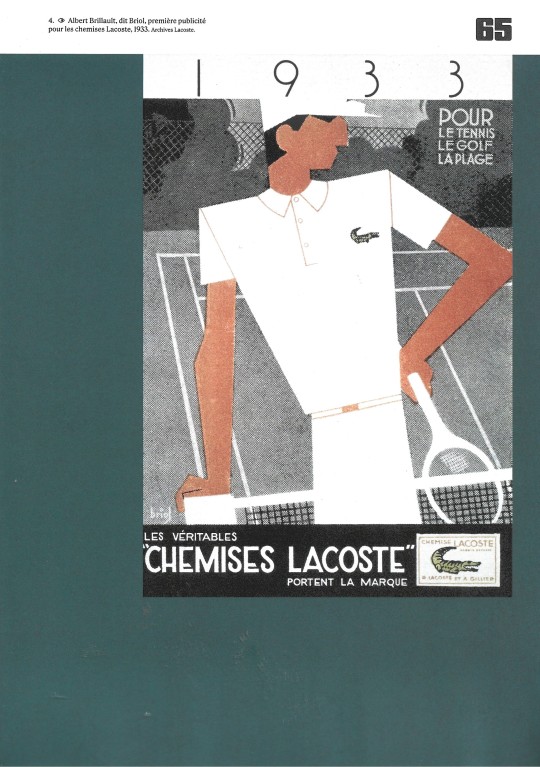


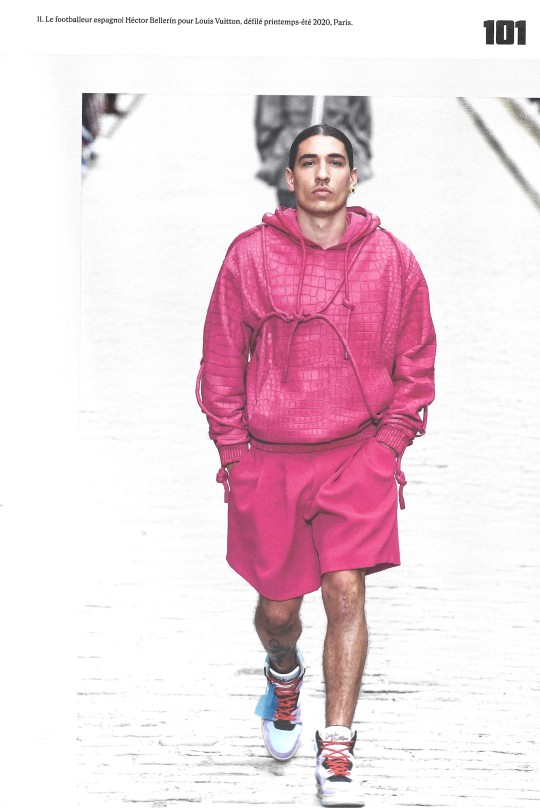


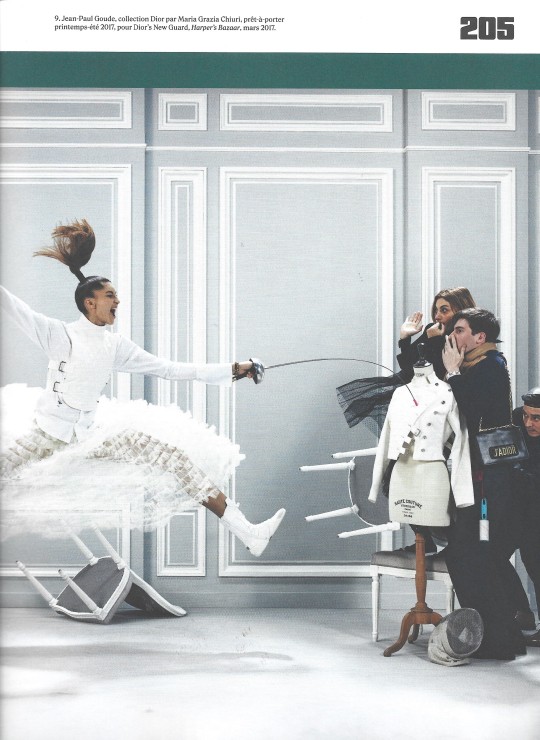
Mode et Sport
d'un podium à l'autre
Sous la direction de Sophie Lemahieu
UCAD, Paris 2023, 244 pages, 22x30,5cm, ISBN 9782383140177
euro 60,00
email if you want to buy : [email protected]
Dans la perspective des Jeux olympiques de 2024, le musée des Arts décoratifs de Paris présente, du 20 septembre 2023 au 7 avril 2024, « Mode et sport, d’un podium à l’autre » une exposition qui explore les liens fascinants qui unissent la mode et le sport, de l’Antiquité à nos jours. Ce projet d’envergure révèle comment deux univers a priori éloignés participent des mêmes enjeux sociaux, autour du corps. 450 pièces de vêtements et accessoires, photographies, croquis, magazines, affiches, peintures, sculptures, vidéos mettent en lumière l’évolution du vêtement sportif et son influence sur la mode contemporaine. Jean Patou, Jeanne Lanvin, Gabrielle Chanel, Elsa Schiaparelli font partie des pionniers qui, pendant l’entredeux- guerres, s’intéressent à l’univers sportif et le retranscrivent dans leurs créations de haute couture. L’exposition montre comment le sportswear a permis de détourner le vêtement sportif de son usage spécifique pour l’intégrer au vestiaire quotidien. La question du confort, fil conducteur de l’exposition, permet de comprendre les raisons pour lesquelles le jogging et les sneakers sont devenus des incontournables de la mode, aussi bien pour le quotidien que pour la haute couture, de Balenciaga à Off-White.
10/10/23
#Mode et Sport#fashion exhibition catalogue#Musée Arts Décoratifs Paris 2023#450 pièces#sportswear#univers sportif#fashion books#fashionbooksmilano
6 notes
·
View notes
Text









Queen Máxima and Mrs. Brigitte Macron during the opening of the exhibition 'Iris van Herpen: Sculpting the Senses' at the Musée des Arts Décoratifs in Paris, a tribute to Van Herpen's progressive designs. November 28, 2023.
34 notes
·
View notes
Text
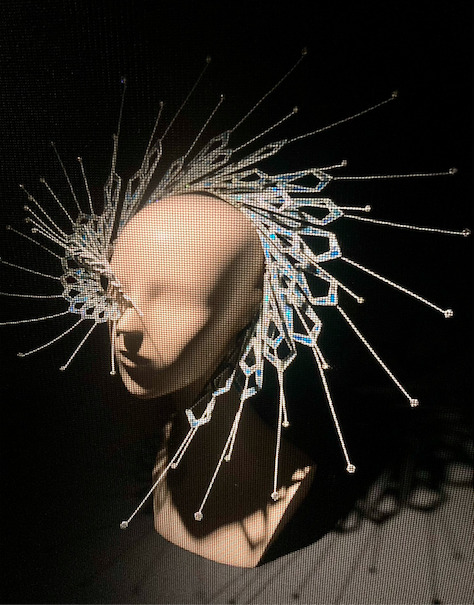
Couronne "Spiral Nebula" d'Iris van Herpen en acier et cristaux Swarovski (2023) à l'exposition “Iris van Herpen. Sculpting the Senses” au Musée des Arts Décoratifs (MAD), Paris, février 2024.
#expos#style#insirations bijoux#bijoux de tête#fairies#strass#Swarovski#VanHerpen#MuseeArtsDecoratifs
8 notes
·
View notes
Photo

Alors que l’exposition « Années 80 » cartonne toujours aux Arts décoratifs, le musée présente, en parallèle, jusqu’au 11 Juin 2023, l’univers foisonnant d’Etienne Robial. Pour les amoureux de la Bande dessinée, Etienne Robial est un monument. En créant la maison d'édition Futuropolis, objet de la première partie de l’expo, il joue un rôle déterminant dans l'évolution du 9 eme art. Il accompagne l’envol de nombreux auteurs francophones comme Tardi, Bilal, Gir ou Montellier. Il importe des bandes dessinées américaines indisponibles en France, des grands classiques ( Popeye de Segar, ou Krazy kat d’Herriman) aux auteurs plus underground comme Robert Crumb. Il porte la bande dessinée aux rang de beaux-arts en publiant de grands romans contemporains illustrés par des artistes de BD. Le voyage au bout de la nuit de Celine, avec des dessins de Tardi, est un succès. La seconde partie de l’exposition se consacre au Robial graphiste s’inspirant des principes du Bauhaus. Ses créations sobres reposent sur le triptyque forme, couleur et alphabet . Il invente le concept d’habillage télévisuel en concevant l’identité graphique de Canal+. On se souvient tous des génériques de la chaîne composés de ces rectangles et carrés en noir et blanc et de ce logo elliptique arc en ciel. Le logo de M6 et du PSG, c’est lui. La police de l’Equipe, c’est encore lui. En 1986, à propos de Canal +, le monde salue « un look simple et élégant ». Une punchline percutante qui résume le style Robial . Vous cherchez votre prochaine exposition ? Abonnez-vous à mon compte Instagram paris_aimelart @madparis @etiennerobial @futuropolis @canalplus @paris_aimelart @paris @timeoutparis @quefaireaparis @paris.explore @paris_art_com @artaparis @paris_culture @expositionparis.info @paris_love_street @parismusees @vivreparis #museedesartsdecoratifs #futuropolis #bandedessinee #dessin #canalplus #ArtExhibition #ParisMuseum #SortirAParis #parisaimelart #paris_aimelart #parisexpos #parisexposition #exposparis #paris #exposition #parismusees #parisculturel #quefaireaparis #artparis #parisart #parisjetaime #parislife #parissecret #parisianlife #culture #expo (à Musée des Arts Décoratifs, Paris) https://www.instagram.com/p/CpdZ7r0IeVY/?igshid=NGJjMDIxMWI=
#museedesartsdecoratifs#futuropolis#bandedessinee#dessin#canalplus#artexhibition#parismuseum#sortiraparis#parisaimelart#paris_aimelart#parisexpos#parisexposition#exposparis#paris#exposition#parismusees#parisculturel#quefaireaparis#artparis#parisart#parisjetaime#parislife#parissecret#parisianlife#culture#expo
1 note
·
View note
Photo

{𝗦𝗰𝗵𝗶𝗮𝗽𝗮𝗿𝗲𝗹𝗹𝗶} "L'Italienne qui fait des robes" disait d'elle Gabrielle Chanel. Certes, mais quelles robes! Je viens enfin de voir cette exposition consacrée à Elsa Schiaparelli, la créatrice amie des surréalistes et à la célèbre robe homard ou au chapeau soulier. Si je trouve toutes les robes plutôt datées et si aucune ne m'a fait dire: "vous l'auriez en 38", j'ai absolument adoré le travail de broderie de la maison Lesage réalisait pour Schiap'. Quelles splendeurs, quelle inventivité et maestria dans la façon! J'étais très curieuse de découvrir les célèbres petits pulls en trompe l'œil (ils sont géniaux) et la robe au homard (étonnamment tentante), de voir enfin du rose shocking originel (sublime), une veste figurant sur une toile de Picasso (madame Eluard) et voir quelques pièces de la maison Schiaparelli nouvelle génération. Aujourd'hui comme hier, tout est fait pour les tapis rouges et les élégantes fortunées. Nous ne sommes pas dans le vêtement de tous les jours mais dans le dressing comme une collection d'art. Il était vraiment temps de rendre hommage au travail de création de dame Schiap', cela rend plus lisible le travail ultérieur d'Yves Saint-Laurent par exemple (la belle cape rose étoilée, c'est lui). Je vous prépare un second post avec les parfums, les flacons m'ont beaucoup amusée! A voir au musée des arts décoratifs jusqu'au 22 janvier 2023. #elsaschiaparelli #mode #fashion #shockingpink #museedesartsdecoratifs #paris #ipreview via @preview.app (à MAD Paris) https://www.instagram.com/p/Cmwr-Xas6N8/?igshid=NGJjMDIxMWI=
0 notes
Text
How to wear the deep ocean
It’s been few years that I have been following the fashion designer Iris Van Herpen, she has such an original approach to Haute Couture. Two years ago she worked with her team around abysses’s forms for the Paris Fashion Week. Paris is the city of fashion and renowned for luxury and fashion but Iris Van Herpen isn’t French, she is Dutch. Still, France adopted her in a way : in 2011, she became a guest-member of the Parisian Chambre Syndicale de la Haute Couture. She is also renowned internationally and had created clothes for pop stars such as Lady Gaga, Beyonce and Björk. There are only 7 stores where to buy her work and she choose meticulously her clients.
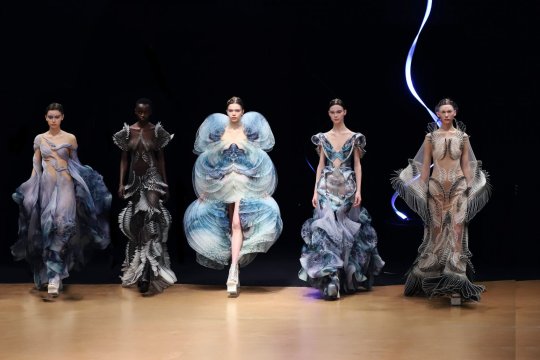
The 38 years old designer used a myriad of techniques to infuse movement into the twenty-two looks that were part of this collection. She ordered some oil painting to the artist Shelee Carruthers and then putted the visual on some fabric. The collection is made with laser-cut black leather, and of course 3D printing ornaments. Iris van Herpen has been an intern for the fashion design Lee Alexander McQueen and since she launched her couture label she has been called ‘The Alexander McQueen of Tech Geeks’.
« Haute couture is the art of fashion » she says. It has this specificity also to be an art in motion. Iris Van Herpen studied ballet and was passionate about it, which explains how dance and movements play such a vital role in her work. In addition, her mom is a danse teacher.
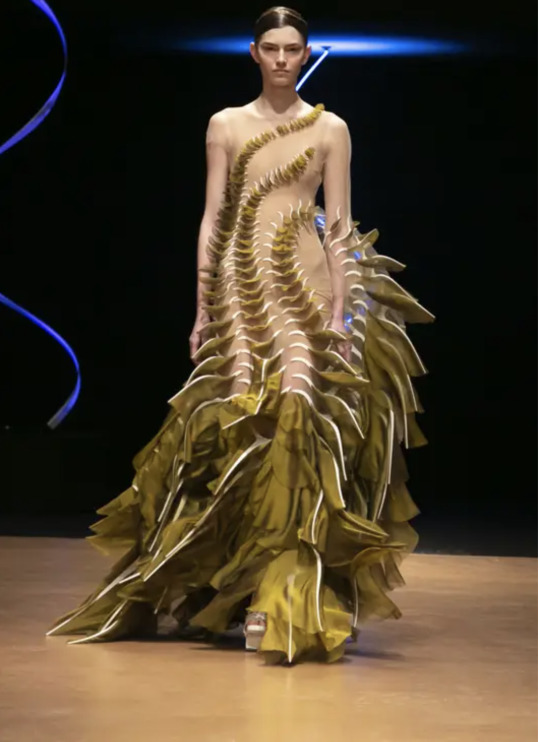
Iris Van Herpen can evoke just about any pattern in nature: plant membranes, feathers, fossils, fins, bubbles, sound waves—the current list is long and impressive. For this collection, along with exploring the branching forms of dendrites and deep-sea hydrozoa organisms, she seemed to be evoking their natural and varied states of movement. The looks are asymmetrical and the forms between science and architecture. Her style biomimicry, which means a way to copy natural forms.
An exhibition of her work is planned at the Musée des Arts Décoratifs de Paris for 2023. Ready !
Klervie 02/10/22
1 note
·
View note